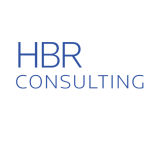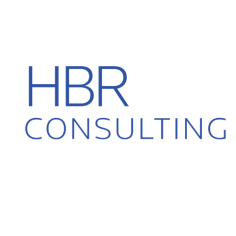HBR Consulting – The Billing Evolution: How far along is your firm?
By Sharon Quaintance and Christine Indiano
Even if your legal work is first-rate, a lack of timely and accurate billing is likely negatively impacting your firm’s profitability.
In response, firms are increasing their focus on enforcement of timekeeping policies, faster pre-bill review, more efficient billing processes and use of new technologies, according to HBR Consulting’s 2017 Billing and Revenue Cycle Survey of 25 selected Am Law 200 firms.
Clients are driving many of these changes. Corporate law departments — particularly those of public companies — are demanding higher levels of transparency and predictability in the billing practices of their outside counsel. And for good reason: in-house counsel budgets are getting tighter and expectations regarding accurate forecasts are increasing.
This is evident in the efforts of the Corporate Legal Operations Consortium, which is working toward greater standardization of outside counsel guidelines (OCGs) and other efficiency initiatives. To ensure timeliness and transparency, in-house counsel continue to implement detailed OCGs particularly with terms related to billing requirements. Common e-billing platforms automatically flag or reject noncompliant items, providing in-house teams with visibility into instances when guidelines are not being met. In this stricter environment, law firms are implementing strategies to improve compliance with client guidelines before the eBills are even submitted.
These increasing client expectations are driving a billing evolution. Of course, firms vary widely on where they are in the adoption of these seemingly inevitable changes. The HBR survey revealed that forwardthinking law firms are making changes within their back-office functions particularly related to internal policies and procedures. Interestingly, even though the survey results showed that newer technology can serve as valuable tools, most firms continue to see the greatest opportunities to improve involve more fundamental blocking and tackling. This often means focusing on items such as daily time entry, standardized narrative entries and additional quality control steps in the billing process.
Technology is a Supporting Tool, But it is Not a Stand-Alone Solution
Sharon Quaintance Christine Indiano Technology can enhance various steps in the billing process, but it will only be successful if there is topdown support of new policies and procedures that accompany the rollout of a new tool.
For example, new timekeeping software tools feature timekeeper assignments, low-retainer reminders, nonbillable entry fields and easy-reference guidelines to make it easier for firms to avoid these common billing mistakes. However, firms sometimes struggle with disciplined use of these new features. For instance, if a “warning” during time entry can be easily bypassed, then the benefits of the technology tool are reduced. In general, firms are beginning to be more diligent in using these features (e.g., creating additional “flags” in their processes when warnings are ignored, and blocking noncompliant time from release until adjusted for accuracy).
The HBR survey indicated that 63 percent of respondents ranked time entry system software implementation or upgrade as an essential or fairly high priority over the next 1-2 years.
Although implementing new technology is a priority, the HBR survey found that 83 percent of law firms have made billing process improvement a top priority for 2018.
Examining the Current State of Law Firm Billing Processes
Law firms continue to examine opportunities to improve processes and better align resources to meet evolving client demands. The HBR survey shows that approaches can vary, and even the most advanced law firms can improve their quality control. The following are areas frequently targeted for improvement:
Preparing for a New Client or Matter
Law firms appear to be increasing the focus on quality control steps during the new matter setup process with the objective of reducing or eliminating downstream problems during billing. In the HBR survey, 72 percent of the firms surveyed are using a role to confirm the accuracy of rates and discounts during client and/or matter intake. Somewhat worrisome are the 28 percent that do not assign this quality control task to anyone.
Outside Counsel Guidelines
When it comes to OCGs, which are used in part to standardize timekeeping and billing processes to a specific client’s requirements, the HBR survey found that 36 percent of firms do not assign anyone to review, summarize and distribute OCGs to relevant stakeholders. The good news is that of the subset of law firms not performing these functions today, 78 percent are considering adding a role for handling OCG summaries in the next 1-2 years.
While it is certainly problematic to leave that level of OCG responsibility out of a firm’s process, HBR has found that even when OCG data is readily available in a central repository — as it is for 60 percent of firms surveyed — issues often remain with information distribution and compliance. All timekeepers should be trained in specific OCG requirements, whether they are attorneys or paralegals. Reminding timekeepers in individual practice groups of the relevant guidelines on a routine basis can result in a measurable improvement in billing outcomes.
Timekeeping and Pre-Bills
Daily timekeeping has been shown to more accurately capture billable time while also reducing the costs of late invoices. According to the HBR survey, 84 percent of firms have either a daily or weekly time-entry deadline, and those are in addition to month-end deadlines with clear financial repercussions and / or rewards in place. Surprisingly, only 60 percent of firms have firm-wide narrative guidelines, which help to maintain consistency between timekeepers. But, those firmwide guidelines are only effective if they are enforced, and currently only 40 percent of firms that have narrative guidelines enforce them.
Although more firms are adopting timekeeping technology, 60 percent of firms are still using paper processes for their pre-bill review. While this is a familiar and therefore comfortable way of reviewing pre-bills, it is not a transparent process. It also can create bottlenecks when more than one attorney is asked to review for accuracy. Few surveyed firms are utilizing an electronic pre-bill process, only 16 percent. However, this increased from 8 percent in last year’s HBR survey and will likely continue to increase to ease frustrations associated with paper-based processes.
Roles and Responsibilities in the E-Billing Process
By now, most law firms are using e-billing tracking software or tools, which explains why the lowest 2018 priority in the HBR survey was “implementing an e-billing tool” (38 percent). Today, forwardthinking law firms are focused on optimizing the ways in which personnel work with software and one another to effectively manage the billing process.
Education and training are critical steps when undergoing changes to any process. According to the HBR survey, firms have an average of 80 percent of their full-time billing employees trained in e-billing — even if their roles are not dedicated to e-billing.
Of those law firms that do have dedicated e-billing staff (80 percent), their most common e-billing tasks include: rejection resolution assistance, e-Bill client matter administrative setups, updates or input of timekeepers / rates and aging e-Bill status research / monitoring.
Other support staff (e.g., legal secretaries) are still commonly involved in billing, but specific responsibilities are changing. Of the firms in the HBR survey, 92 percent involve support staff in the billing process, and their most common activities include reviewing narratives and implementing attorney edits to pro formas. However, the number of billing-related tasks performed by support staff are decreasing. The survey indicates a shift to reduce legal support team involvement particularly related to manual invoice creation, bill distribution, preparation of accrual reports and the tracking of accounts receivables.
As these trends indicate, leading law firms understand that while policies, process changes and new tools can improve billing efficiency and quality, people remain a critical part of successful change. Attorneys and staff members need to be informed, empowered and accountable as they work together with billers to get the best end results.
Tactics for Ensuring Timely, Accurate Invoices
Billing attorneys have an obligation to review time entries and hours worked prior to billing to ensure they are accurate and reasonable. However, many law firms have yet to create an effective and efficient process for this review. Often the policies that are in place are either ineffective or not enforced. This has taken a toll on the overall timeliness of distributing bills to clients. Firms are aware of the delays and are increasingly focused on improving their revenue cycle time. In fact, 80 percent of firms surveyed have a targeted goal to reduce the revenue cycle time, which includes both the measurement of days to bill and days to pay metrics.
Wherever your law firm is in its billing evolution, firms should consider these industry best practices:
Implement and enforce policies requiring timekeepers to enter their own time. At a minimum, require all nonpartners to enter their own time. Secretaries and support staff should provide a support role rather than a direct role.
Ensure that time is entered contemporaneously with the work efforts. Some timekeeping software products have features that make this easier. ● Store OCGs in a centralized location. Ensure that timekeepers are aware of their existence and know where to find them.
Standardize narrative guidelines within the firm. If you can do this by practice area, even better.
Send pre-bills electronically and use track changes. Paper-based processes lack transparency and tend to slow things down.
Invest time into change management. It is not easy to break old habits, but it helps when you consistently demonstrate the value of the new processes and use the voice of the client as an impetus for change within your firm.
Most law firms have implemented initial billing improvements using technology (e.g., timekeeping, ebilling, pre-bill review). However, innovative firms are taking further steps by updating billing policies and processes to fully maximize technology, enhance client relationships and improve profitability. Training attorneys and implementing change management strategies will further cement positive change. These billing evolution initiatives are allowing firms not just to meet heightened client expectations, but to differentiate themselves in an increasingly competitive market.



